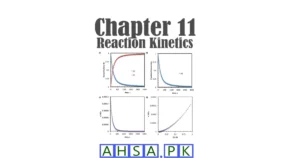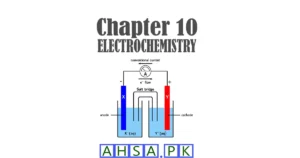The most important Chemistry chapter 1 short questions for Class 11. 1st Year Chapter 1 of Chemistry is related to basic concepts. These questions are for the Punjab Text Book Board that can be used within all of Punjab where this syllabus is taught.
Students are advised to must prepare these questions in order to perform the best in the board examination.
Chemistry Chapter 1 Short Questions for Class 11
- Define molecular ion. How is it formed?
- Define molecular ion. Write its uses.
- What are isotopes? Why do they have the same chemical but different physical properties?
- Explain the mathematical relationship of m/e of an ion in mass spectrometry.
- What is mass spectrum?
- Write functions of Mg(ClO4)2 and KOH in combustion analysis.
- How does no individual neon atom in the sample of the element has a mass of 20.18amu?
- Why oxygen cannot be determined directly in combustion analysis?
- The magnesium atom is twice heavier as the carbon atom. Comment.
- How does one mg of K2CrO4 have thrice the number of ions than the number of formula units when ionized?
- How 4.9g of H2SO4 when completely ionized in water have an equal number of +ve and -ve charges but the number of positively charged ions are twice the number of negatively charged ions.
- 23 g of sodium and 39 g of potassium have an equal number of atoms in them. Justify.
- Differentiate between empirical and molecular formulas.
- A compound may have the same molecular and empirical formula. Justify.
- Define molecular formula. How is it related to the empirical formula?
- The law of conservation of mass must be considered during stoichiometric calculations. How? OR How is law of conservation of mass obeyed during the stoichiometric calculations?
- Calculate the number of water molecules in 10 g of ice.
- Give assumptions of stoichiometry.
- Calculate the mass in Kg of 2.6 x 10^20 molecules of SO2.
- What is Avogardro’s number? Give an equation to relate Avagadro’s number and mass of the element.
- One mole of H2SO4 should completely react with two moles of NaOH. How does Avogadro’s number help to explain it?
- One mole of H2O has 2 moles of bonds, 3 moles of atoms, 10 moles of electrons, and 28 moles of total fundamental particles present in it.
- How do N2 and CO have the same number of electrons, protons, and neutrons?
- Calculate the number of moles of oxygen in 9 g of Mg(NO3)2.
- Calculate the mass in grams of 2.74 moles of KMnO4.
- Why do 2g of H2, 16 g of CH4, and 44 g of CO2 occupy separately the volume of 22.414 dm3 although the sizes and masses of molecules of the three gases are very different from each other?
- Define limiting reactant. Give an example.
- How many chemical reactions taking place in our surroundings involve limiting reactants?
- Define actual yield. Write a formula for the calculation of percentage yield.
- Why theoretical yield is greater than actual yield?
- Why do we calculate percentage yield?
Find the answers from the Chemistry book of Class 11 Chapter 1
Important Short Questions of Chemistry 1st Year




